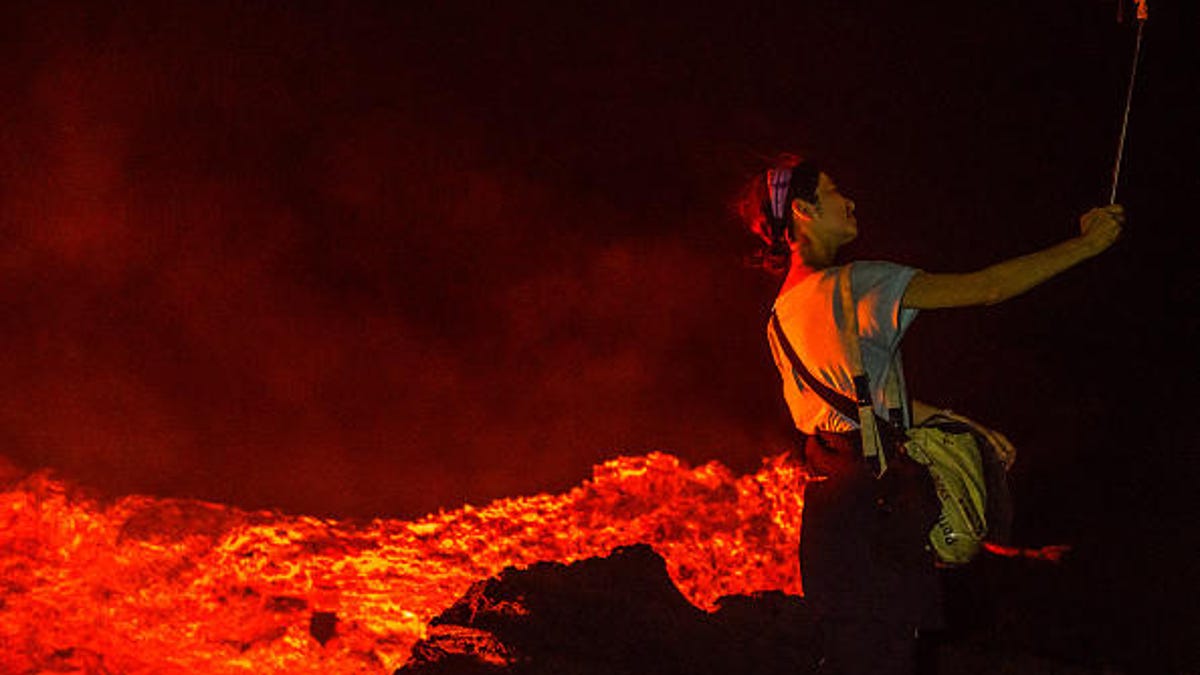Risky selfies killed 259 people in 6 years, study says
The deaths happened in 137 incidents worldwide from 2011 to 2017.

A tourist snaps a selfie in front of the living lava lake in the crater of a volcano in Ethiopia.
Selfie deaths are becoming a problem, according to researchers.
A study published in the most recent edition of the Journal of Family Medicine and Primary Care calls for the declaration of "No Selfie Zones" in dangerous areas such as mountain tops, tall buildings and water bodies in order to decrease deaths.
India-based researchers found that 259 people worldwide died from accidents that occurred while trying to take a cool selfie in 137 incidents from October 2011 to November 2017. The average age of the deceased was roughly 23 years old, and over 70 percent were males.
Most of the selfie deaths occurred in accidents related to drowning, fires, vehicles and falls, according to the report. Drowning was the most common cause of death, such as when someone got washed away by waves on a beach or when a boat capsized while the person tried to take a selfie. Some people also died taking selfies in front of moving trains. Other deaths involved animals, electrocution and guns.
The highest number of reported selfie deaths happened in India, followed by Russia, the US and Pakistan. Most of the deaths in the US were due to firearms, according to the study.
The massive use of cellphones and the "desire of 'being cool,' posting photos on social media, and getting rewards in forms of likes and comments" are causing more selfie deaths, according to the researchers. They recommended declaring "No Selfie Zone" because "selfies take a toll on a large number of adolescents" and noted that some countries already post signs warning against selfies in dangerous areas.
The study was based on English-language news reports, the researchers note, therefore reports in other languages would have been missed and more selfie-death cases could have occurred.
"I would say people need to be educated and made aware of selfie deaths as a public health problem," Agam Bansal, one of the researchers, said in an email. "The government and officials should take strict preventive actions as declaring certain spots as risky areas and beyond which taking selfies should be prohibited."
First published Oct. 4, 10:13 a.m. PT.
Update, Oct. 5, 6:43 a.m. PT: Adds researcher Agam Bansal's comment.

